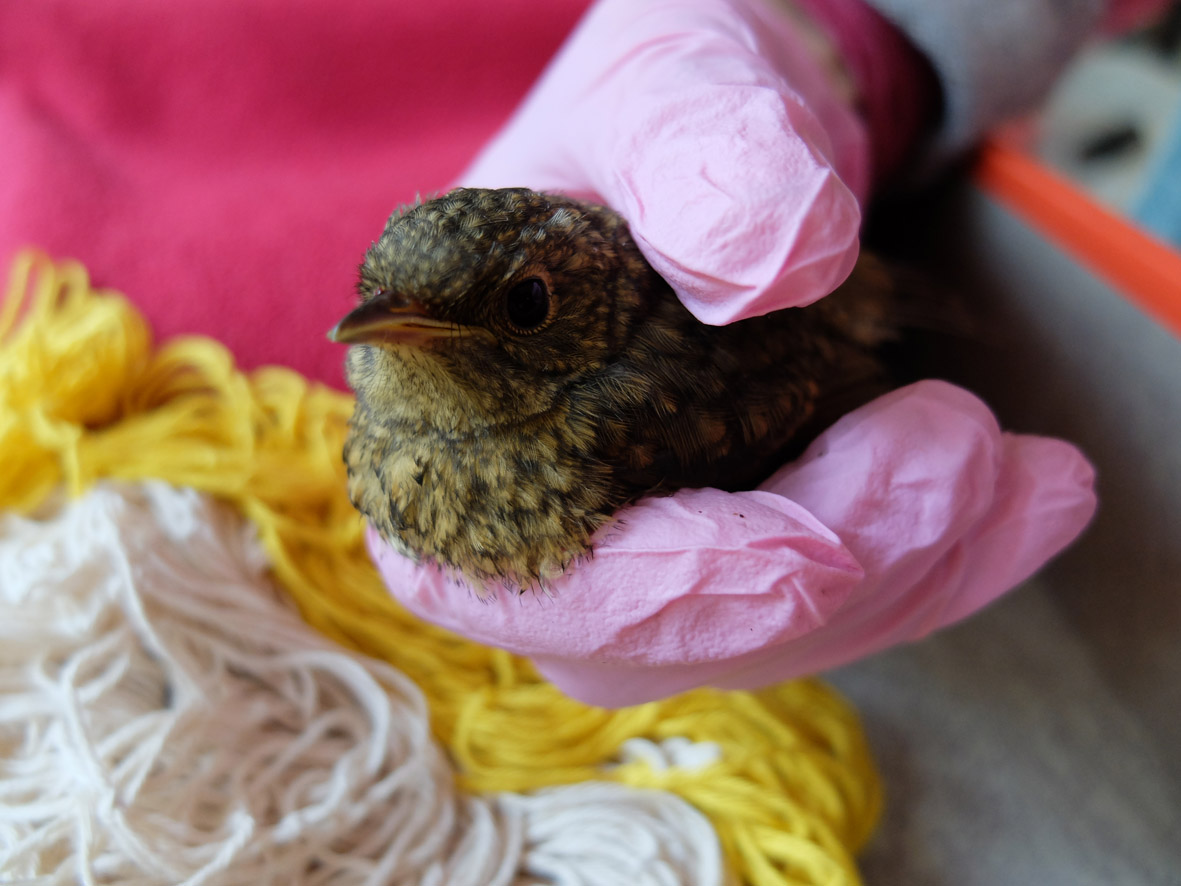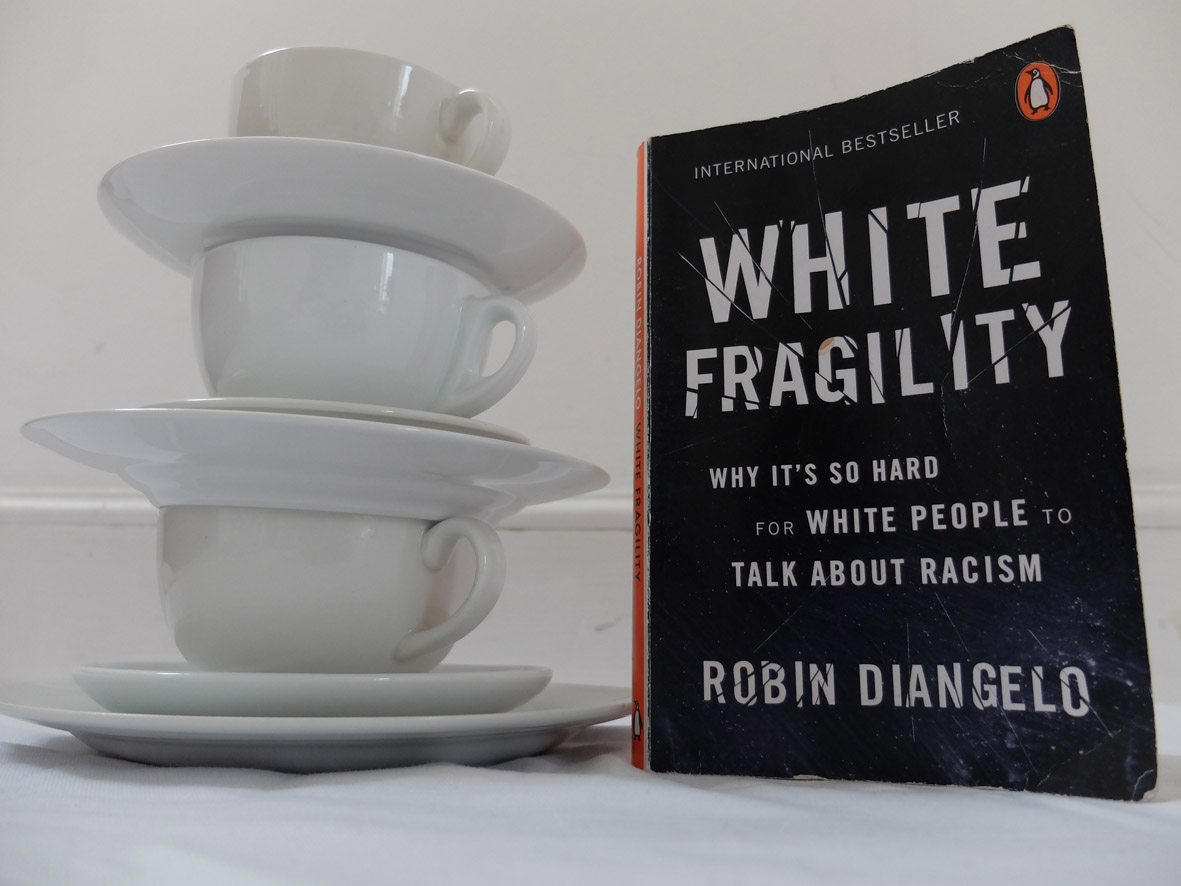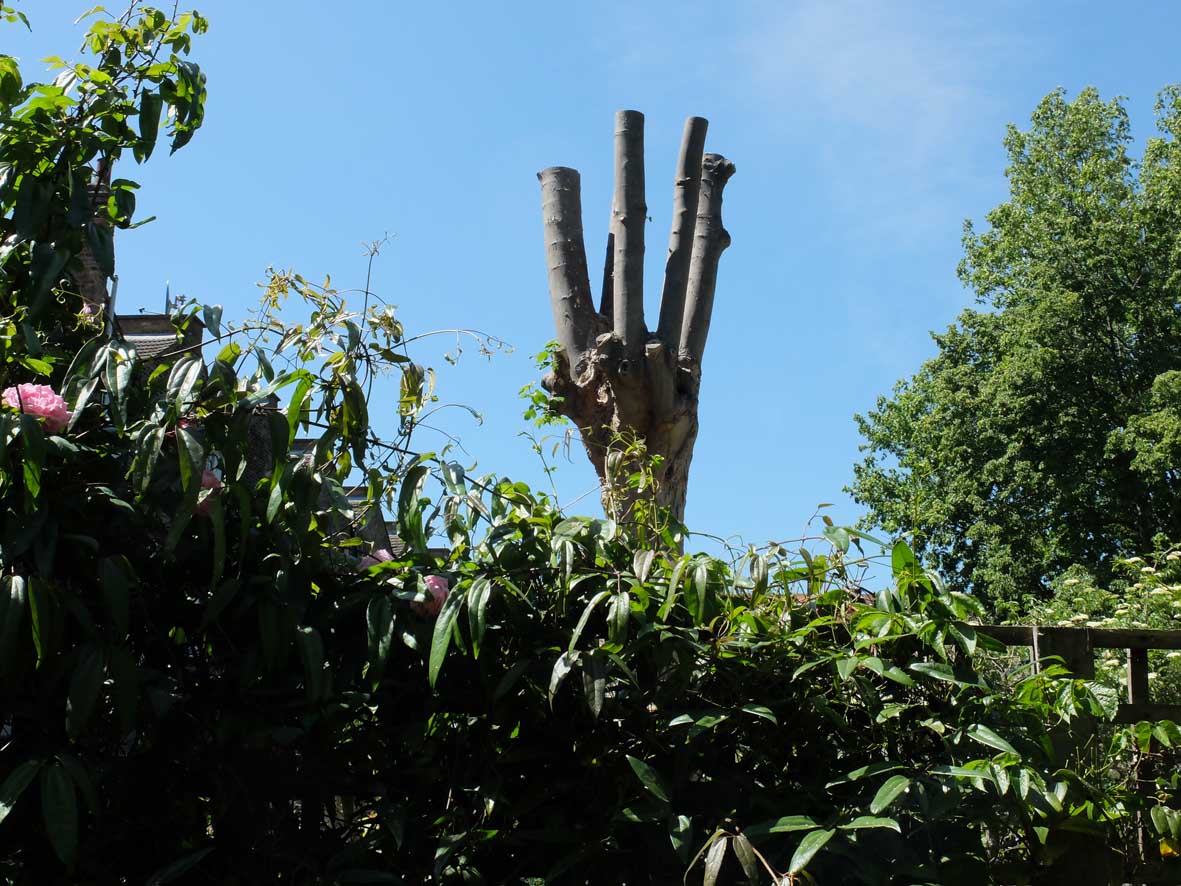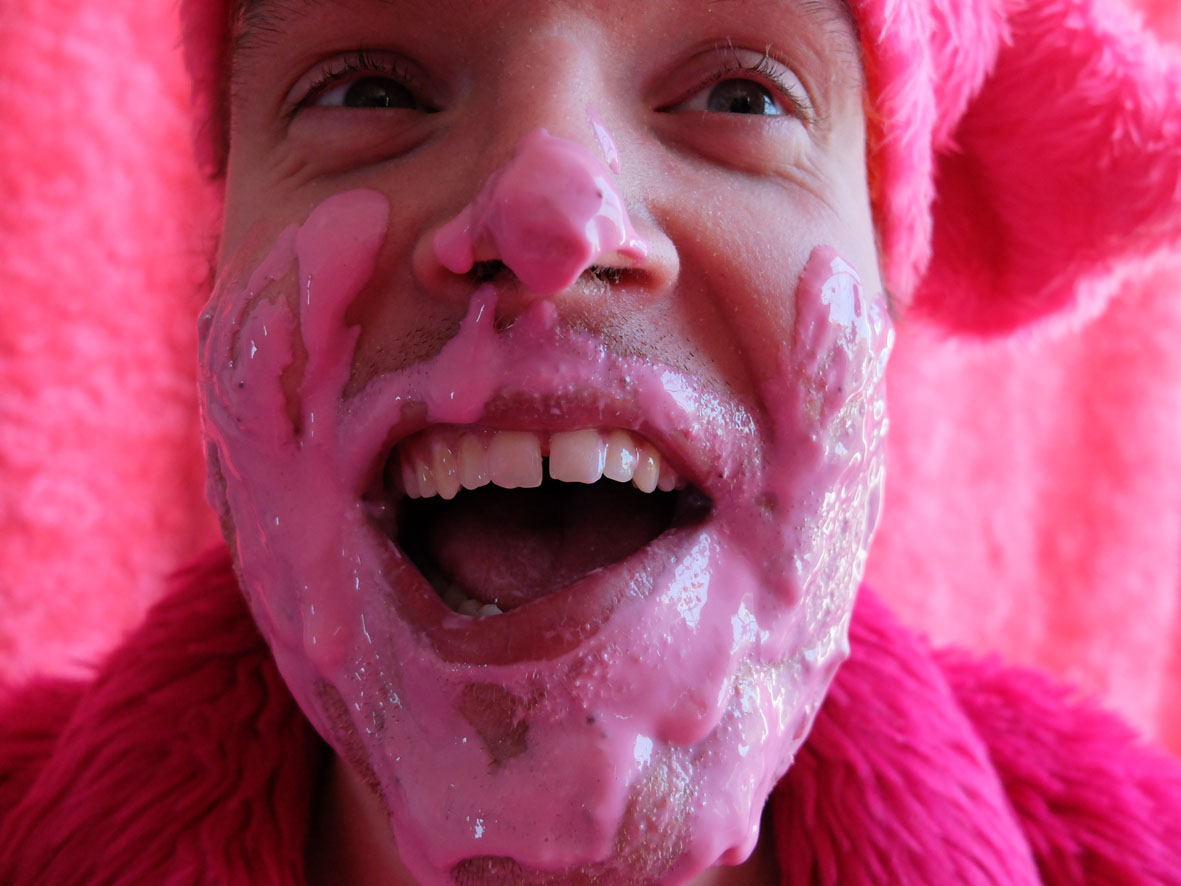19 Jun Fledgling
 Shelly scoops up the young robin, who concussed has dropped to the ground in a state of freeze. No avian parents to oversee the youngster’s wellbeing are around to sound the alarm. She uses gloves to avoid scenting the fledgling with human. The cat expresses interest. Shelly protects the robin from predators and the chilly breeze. Her care over several hours is rewarded with a happy ending. Movement returned, the robin takes off, visiting later to drink from the bird bath. Squiffy the squirrel is also a beneficiary of Shelly’s nurturing. Wildlife comes close in the garden. Pigeons, foxes, squirrels amongst other wildlife regularly entertain us. I watch blackfly on a Cardoon – the plant has grown as tall as me – being harvested by ants. Kohlrabi and chard seedlings struggle with my inconsistent parenting. I tell Sophy I am growing vegetables. “Use it as a practice in non-attachment,” she advises.
Shelly scoops up the young robin, who concussed has dropped to the ground in a state of freeze. No avian parents to oversee the youngster’s wellbeing are around to sound the alarm. She uses gloves to avoid scenting the fledgling with human. The cat expresses interest. Shelly protects the robin from predators and the chilly breeze. Her care over several hours is rewarded with a happy ending. Movement returned, the robin takes off, visiting later to drink from the bird bath. Squiffy the squirrel is also a beneficiary of Shelly’s nurturing. Wildlife comes close in the garden. Pigeons, foxes, squirrels amongst other wildlife regularly entertain us. I watch blackfly on a Cardoon – the plant has grown as tall as me – being harvested by ants. Kohlrabi and chard seedlings struggle with my inconsistent parenting. I tell Sophy I am growing vegetables. “Use it as a practice in non-attachment,” she advises.











